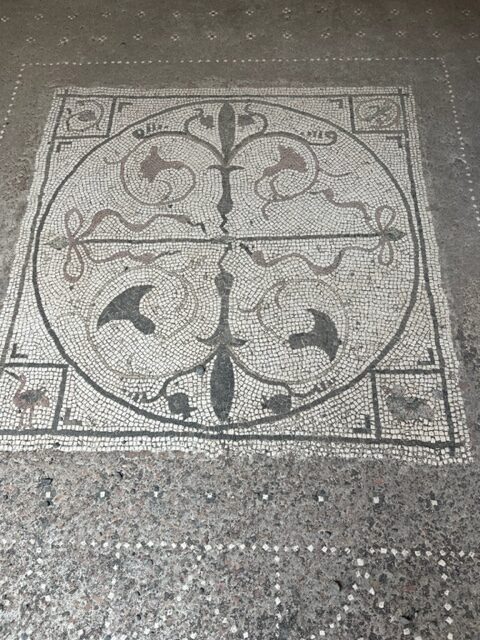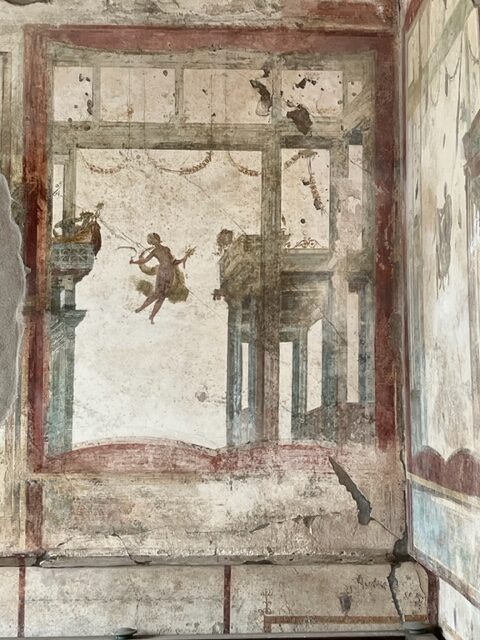By Gail Gold
Mount Vesuvius and Pompei will forever be said in the same breath.

The history reads like a Greek tragedy.
To get a feel for what the lost city looked like before its destruction by Mount Vesuvius, go to the Museo Archeologico Nazionale in Naples. There are well preserved glimpses into everyday life and small finds.
A gigantic replica of Pompei brings the buried civilization to life displaying important artifacts. Some of the treasure trove found on site include medical objects like scalpels, etched horn dice,coins and cutlery, only spoons for soup. It is said pizza was first found in Pompei because there were bakeries and tomatoes, most likely eaten together. Some of the excavated bakeries had bread still inside the ovens.

The designated room for Pompei pornography is filled with risqué frescoes in mosaic, phallic sculptures, paintings. Like many Roman towns, Pompei had a square surrounded by public buildings, a forum, temples, markets, government institutions, bathhouses, theaters plus domestic dwellings either grand or gaudy that are on display with pavements of mosaics and frescoed walls.



The original settlers came to the Roman port city for the fertile soil and it was on the trade route. Fruits, vegetables, olives for olive oil, were easily grown.


Fish were in the sea. This was lucky because the southern part of Italy had limestone soil, not conducive to farming. The same volcano that helped produce such rich land would tragically burst to erupt and kill the entire city of 20,000 inhabitants in A.D. 79. That happened within 48 hours then all life stopped. Streets and homes were buried, thousands lost their lives when the volcanic ash and toxic gases spread over the ancient town. Within a short period of time, no-one could remember where the city once stood. One scholar said: there was no place to hide when Mount Vesuvius erupted.

It was forgotten over 16 centuries awaiting a discovery. The initial excavations of the ancient ruins began in 1748 and the city was rediscovered.
The Swiss engineer, Karl Jacob Weber, supervised the first excavation. The unique look into everyday life and archaeology of the Roman Empire is what made it so interesting. Since its first explorations during the 18th century, ancient Pompei has been one of the world’s most famous and fascinating archaeological excavations. What we now know and understand about life at the height of the Roman Empire comes from the Pompei ruins. Scholars from all over the world come to learn about the residents of Pompei and their lifestyles.
Why is Pompei important to us now?

The ongoing excavations give us a wealth of information about the economic, political, religious and social life of the ancient world. Roman life has been preserved for centuries beneath fine-grained volcanic ash and you can go see it!






